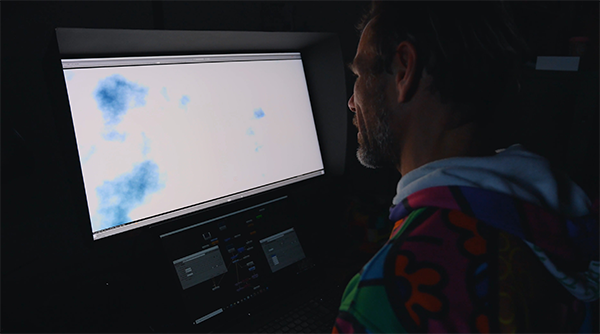Technology as the key driver for enhancing productivity
Overview

The National Centre for Computer Animation (NCCA) has been at the forefront of computer graphics and animation education, and research in the UK since 1989. The aim of the NCCA is to promote science in the service of the arts, and to give its graduates highly sought-after skills in the computer animation, visual effects and computer games industries.
The NCCA has been part of Bournemouth University from 1989 and since then, they have improved the quality of visual effects and animation work remarkably. Today, the NCCA is a recognized center of international excellence in computer animation, fusing technical developments in computer science with underlying artistic principles and practice of computer animation. The school was presented with the Queen’s Anniversary Award in 2011 for “World-class computer animation teaching with wide scientific and creative applications” and its contribution to world-leading excellence and pioneering development in the teaching of computer animation.
Being at the forefront of technology enhanced learning, making use of digital innovations like virtual reality (VR) and augmented reality (AR) makes its graduates highly desirable in the Animation and VFX industry. Some of the great examples of Oscar winning films graduates have worked on include Bohemian Rhapsody, Inception, Interstellar and Ex Machina.
The challenges
The rapid advancement of technology has made Animation and VFX one of the fastest growing segments in the global media and entertainment market. Consumers are increasingly demanding high-quality productions with engaging visual effects and realistic animation. To contribute to the growing global VFX market, the challenge for Bournemouth University is to equip its future Animation and VFX artists with the latest industry-standard technology that is affordable for the faculty.
“We see the purpose of technology and the visual effects in the computer animation industry as a key driver for enhancing productivity to allow artists and practitioners in the discipline to focus on the decision making and the choices that really matter.” - Richard Southern, Head of Computer Animation Department
The solution: compositing visual effects with ASUS ProArt monitor
With the adaptation of HDR workflows becoming the norm, students require equipment that delivers absolute accuracy when it comes to color. Bournemouth University was excited to have the opportunity to partner up with ASUS ProArt and put their monitors to the test.
The school installed ProArt PA32UCG 4K HDR monitors into their MA Visual Effects teaching space. One of the challenges in compositing is viewing the in-camera effects versus the ones that are being added in. With the ProArt monitor the students are equipped with a color accurate HDR monitor, which enables them to see the natural image and the effects they are adding in.

Different HDR empowered workflows
10-bit color is essential when you are working across different HDR formats. If the monitor is restricting the color range, you are not able to see the true picture from the camera. As a compositor, Harvey mentions that not only does the 1600 nits of peak brightness enable him to view the brightest highlights, but more importantly deep into the shadows. With the ProArt monitor, he is now able to see the details of the changing luminance even in the darkest details when compositing.
“I've been using the ASUS ProArt PA32UCG and the thing I love most about it is when you're dealing with very bright pixels next to very dark pixels, you don't get that halo that comes around.” - Harvey Goodall, The Head of Compositing at the National Centre for Computer Animation
Not only is the ASUS ProArt PA32UCG able to switch between SDR and multiple HDR formats, it also comes with Thunderbolt connectivity built in. When you are transferring, transcoding and swapping between hard drives, Thunderbolt allows you to connect multiple hard drives and sources of footage without any concerns about transfer speeds.

The outcome
Bournemouth University academics are also working across disciplines on a range of other projects. As a result of the success these monitors are bringing to the teaching environment, the faculty used these monitors in one of their latest projects that involved working with large LED panels on a volume stage. To make sure these panels are color accurate, Bournemouth University used the ProArt PA32UCG to perform color evaluations.
“The ASUS ProArt monitor is particularly useful when performing color matching between different LED panels, which we had. The panel colors can really vary and the reproduction of Rec. 709 and Rec. 2020. I think it's really essential if someone is in the market to buy LED panels to make sure that they are using quality monitors like the ASUS ProArt PA32UCG for a proper color evaluation to make sure that the panel meets the needs of their production. ” - Richard Southern, Head of Computer Animation Department
Product installed
 |
|
ProArt PA32UCG-K
-32” 4K HDR
-Up to 1600 nits peak brightness
-Support Dolby Vision, HDR-10, HLG
-Calman Ready
Learn more about PA32UCG-K
|